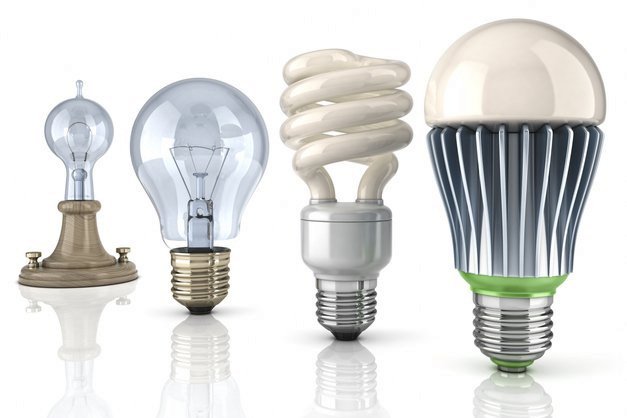[ad_1]

During a power outage, can you count how many times you’ve walked into a darkened room and instinctively flipped the switch? Let me do the math for you—except the answer is not a number, it’s a word . . . COUNTLESS!!! We’ve come to rely on the power of a lightbulb so much, we never even truly appreciate it until it’s unavailable. And if you’re sitting in the dark long enough, you may come to contemplate the light bulb and how it came to be.
In the simplest rendition of history, Thomas Edison invented the first commercially viable lightbulb in October 1879. In truth, at least 20 inventors had been experimenting with incandescent illumination since the early 1800s. Light was a true obsession for many scientists for decades. A few of the most notable names in the not-so-short story of how the lightbulb came to be include British scientist Sir Humphrey David, who in 1802, while working with his latest battery invention, discovered that a piece of heated carbon connected to his new power source glowed with light! This is the first known production of incandescent (glowing due to intense heat) light. However, the glow quickly burned out and wasn’t practical for sustainable use.
Other scientists experimented with heating various elements including carbon and platinum, which all proved to glow, but burned out quickly in open air. The solution to protect the glow in a vacuum (glass enclosure or “bulb”) is attributed to another British scientist Warren de la Rue in 1840. His glowing element of choice was platinum, and while the vacuum allowed it to burn longer, the platinum made it too expensive for commercial development. Ten years later, English physicist Joseph Wilson Swan replicated the bulb vacuum enclosure and used a more economical carbonized paper as a glow element or filament. It was successful and reproduceable and was awarded a patent. But it still wasn’t providing the desired longevity, burning for fewer than 15 hours. Despite Thomas Edison being widely recognized as the inventor of the lightbulb, Swanson’s version is acknowledged in the full history to be the actual invention. Edison’s design years later is considered to be more of a perfection of the technology. Edison’s improvement of the bulb vacuum coupled with his filament experimentation using everything from carbonized carbon thread to eventually carbonized bamboo, resulted in a bulb that was economical to commercially produce and could provide up to 1200 hours of light!
Image from Wikipedia
In fact, Swanson sued Edison in 1882 for patent infringement and won. As part of the settlement, Edison was ordered to give credit to Swanson and make him a partner in his newly founded company, which he had to rename from Edison Electric Light Company to Edison & Swan United Electric Light Company Limited, commonly known as “Ediswan.”
The rest is, well, history! Lightbulb use and manufacturing increased worldwide, and many improvements and innovations have been made along the way. In addition to the still used and strikingly similar to the original design incandescent bulbs of today, there are bulbs made with many new and different technologies including halogen, metal-halide, high-pressure sodium, fluorescent, and LED, just to name a few. Even our website name, 1000Bulbs.com, tells you there are literally THOUSANDS of choices. Each has a place in lighting design, offering different lumen outputs, color-rendering, and energy efficiency. Sadly, there will likely come a time that incandescent lighting technology will become extinct. Since most of the energy to produce the light is actually invested in heating the filament, incandescents are some of the least energy-efficient bulbs. But now that you know the decades of determination that went into the discovery of that first incandescent lightbulb, next time the power comes back on, you might take a moment to celebrate those inventors of long ago that gave us the gift of light!
If you find the vast selection on 1000Bulbs.com a bit overwhelming, call one of our helpful specialists at 1-800-624-4488 and they will direct you to the best light bulbs for your application!
[ad_2]
blog.1000bulbs.com










